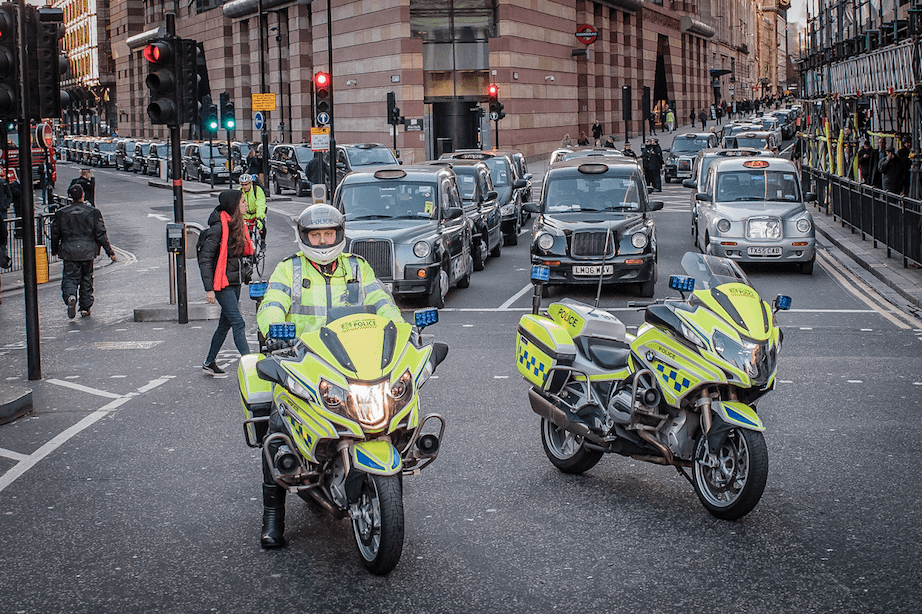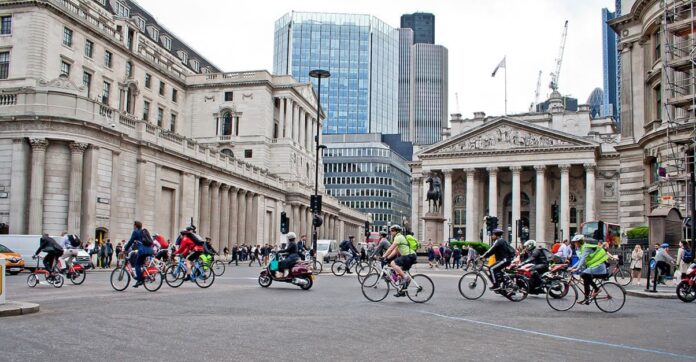CLOSING Bank Junction to cars and trucks has slashed the number of pedestrian and cyclist injuries by more than 50%, according to a new progress report tabled this week.
There were just three collisions in the first five months of the scheme, which closed the accident blackspot on weekdays to all but buses, cyclists and pedestrians from 22 May.
It is a marked improvement on figures from the previous five years, which saw an average of seven casualties each year for the same 19-week period during the operational hours of the ban (7am to 7pm).
The City Corporation introduced an 18-month trial of the ban as part of a raft of safety measures at the notorious six-armed crossroads following the death of 26-year-old cyclist Ying Tao, who was hit and killed by a lorry in 2015.
The move angered some motorists, particularly black cab drivers who blockaded parts of the City earlier this year, calling the scheme “the beginning of the end for the cab trade”.

The report, which was tabled at the projects sub (policy and resources) committee meeting on 11 December, indicates the scheme’s success in other key areas, including faster bus journeys.
Bus routes through the junction during the morning peak have seen an average of between seven and 10 minutes shaved off their times, while those in the evening save between five and seven minutes.
But the Licensed Taxi Driver Association (LTDA) has renewed calls for black cabs to be made exempt from the ban, arguing they were not the source of the junction’s safety issues and that the scheme had caused a reduction in the availability of taxis in the wider Bank area.
The LTDA commissioned its own report into the rationale for excluding taxis from the junction and its impact on the taxi trade and wider traffic conditions, which it submitted to the City Corporation at the beginning of the month.
The report, by transport consulting firm BWB, found that of the 88 incidents of personal injury from 2011 to 2016, just 2.5 should be attributed to taxis – based on a statistically higher number of private hire vehicles operating across the Capital. Buses, by comparison, accounted for 11 incidents, of which four were blamed on the buses involved.
ANPR cameras tracking taxis around the Bank Junction area showed journey times have increased by an average of 21%, while there has been a 49% reduction in the availability of taxis in the areas since the implementation of the trial.
The City’s report identified time increases on seven of the 10 taxi routes surveyed through the Square Mile. In a letter to the City Corporation, LTDA chairman Richard Massett said that it was clear “the trial has had a significant negative impact on the taxi trade, our passengers and the wider travelling public”.
He added: “We hope that the City of London will now look again at the exclusion of taxis from Bank Junction and work with the LTDA to find a solution that balances the improvements made with the need to allow taxi access to this vital area in the heart of the City.”
The City Corporation will continue to monitor the scheme, with results to be made public next summer. A spokesperson said: “Our number one priority for the experimental scheme at Bank Junction is to improve safety. For too long it has been one of the Capital’s dangerous hotspots.
“The number of vehicles travelling through the junction between 7am and 7pm Monday to Friday, has reduced from 16,000 to just over 800 contravening vehicles a day as a result of this scheme.
“This equates to 96% compliance. As a safety scheme, of course our end goal is to see 100% compliance at the junction.
“We have received over 3,600 responses to the consultation. Any feedback and ongoing monitoring will be considered when a decision on the future of the scheme is made in summer next year.”







